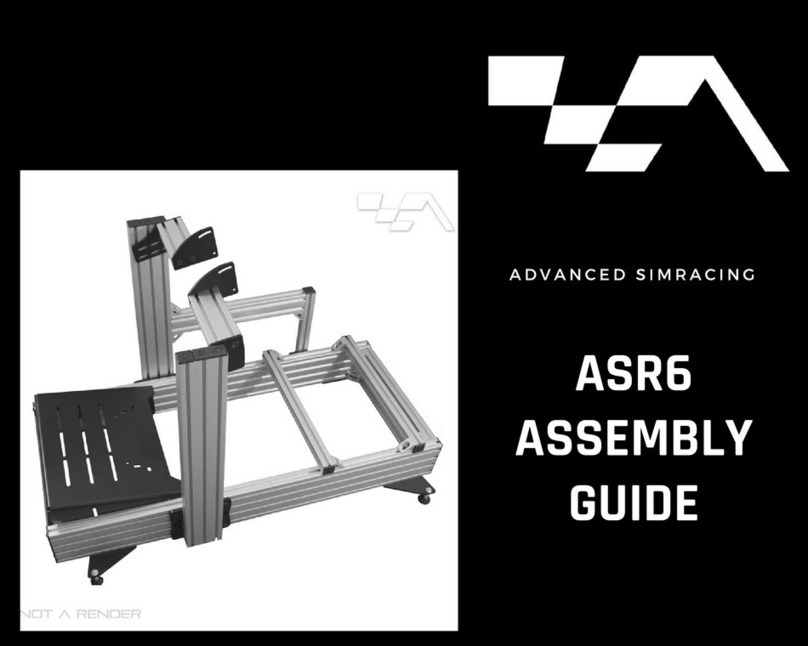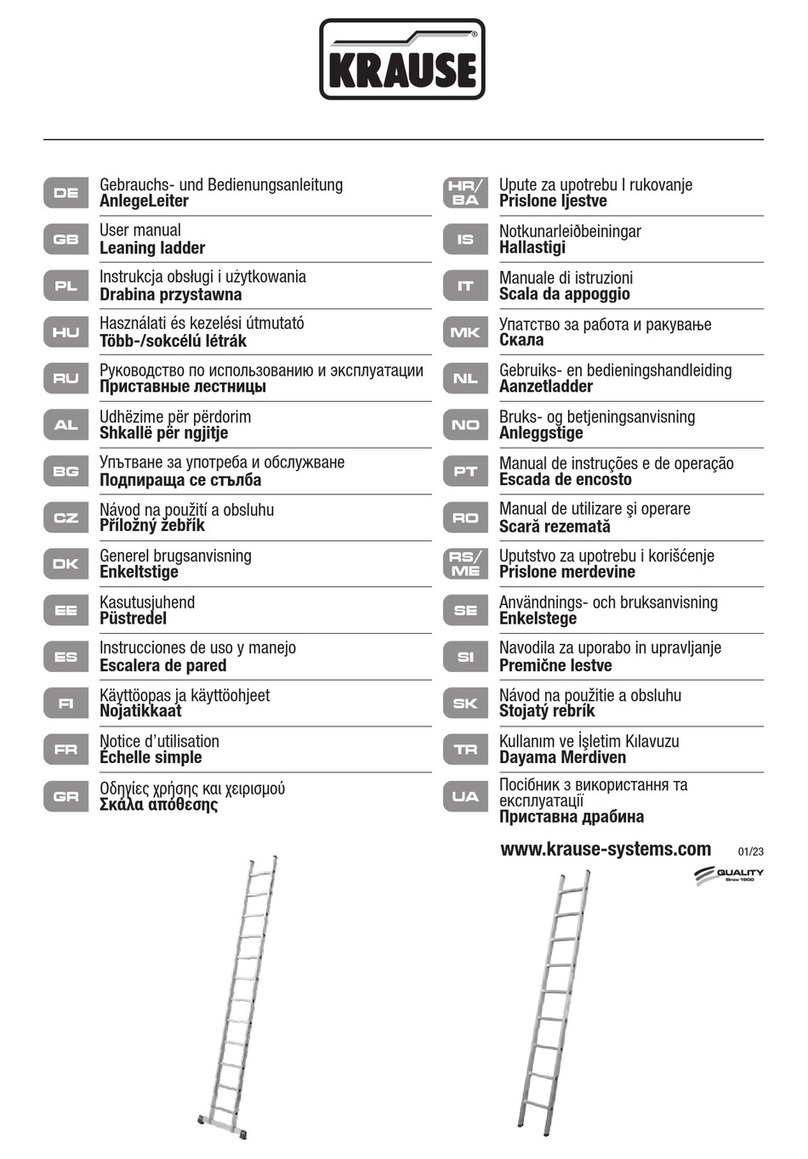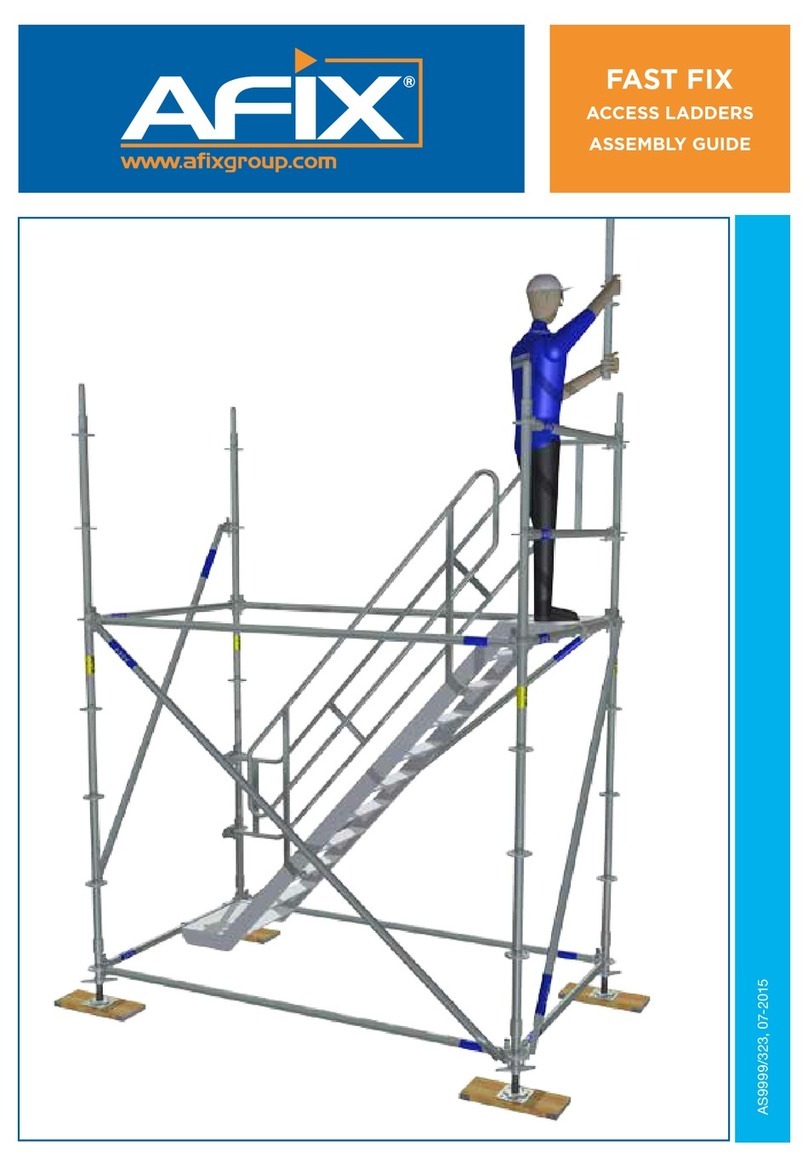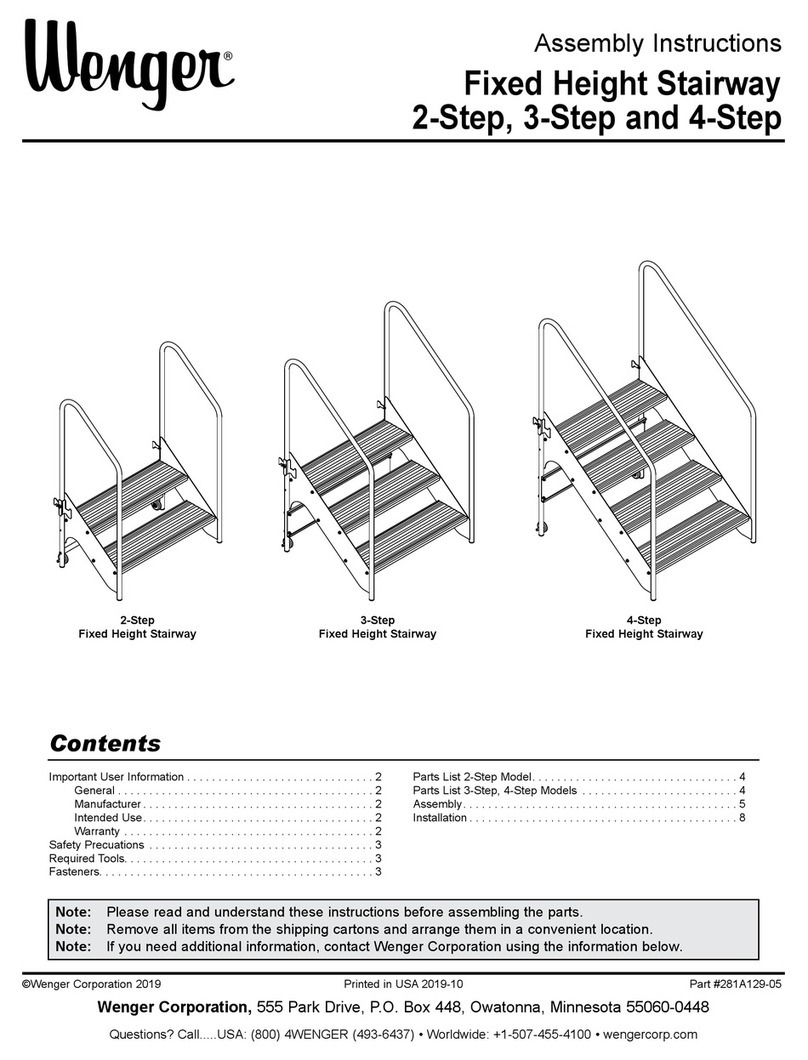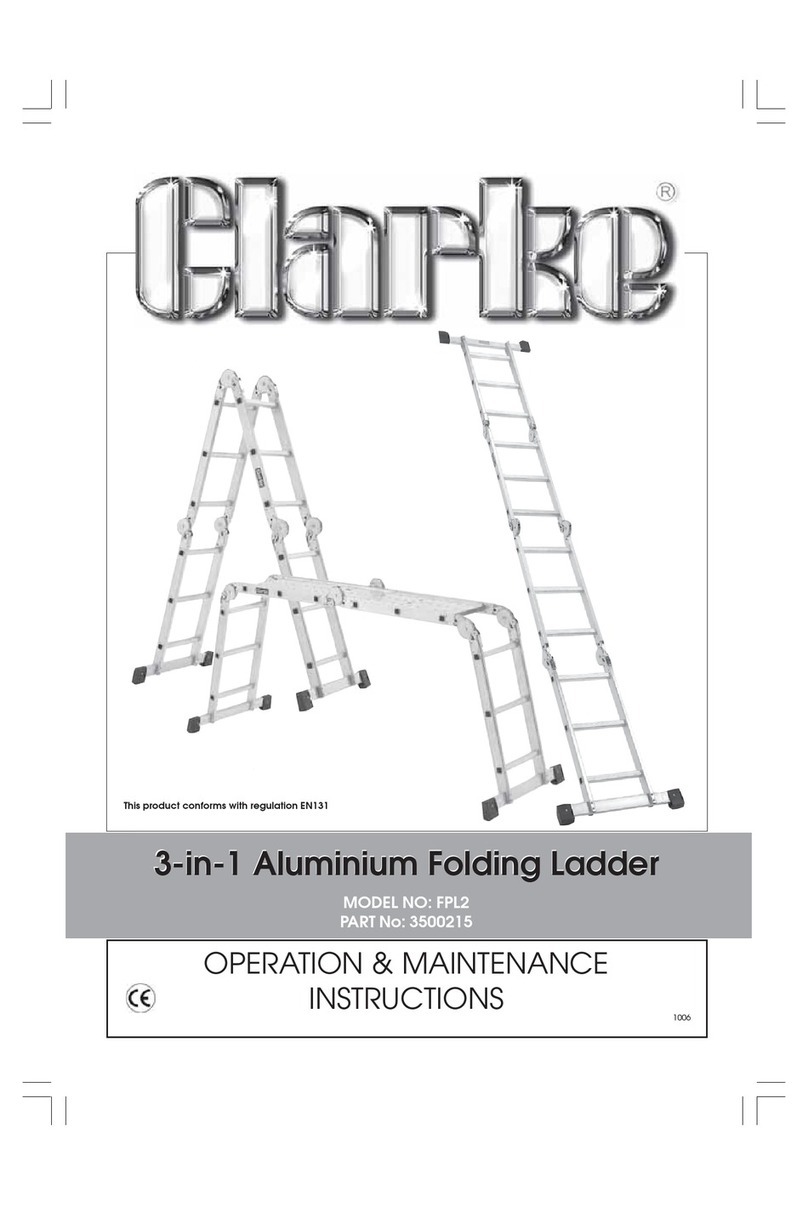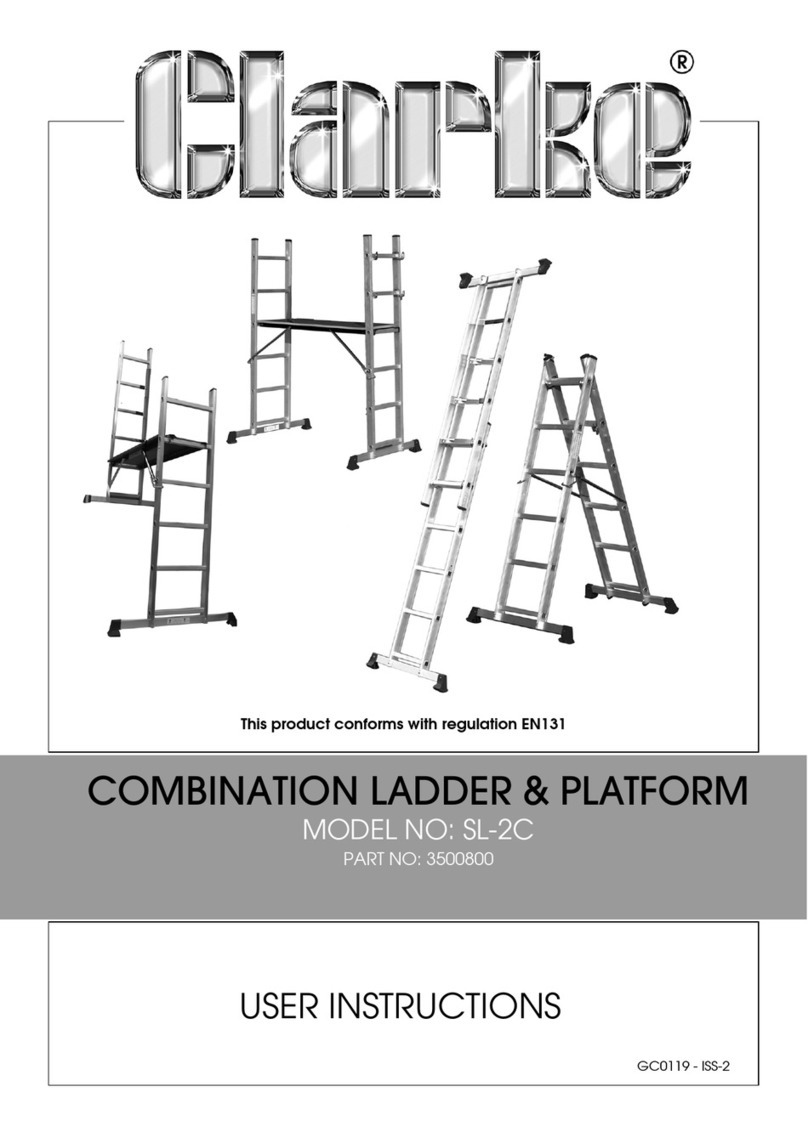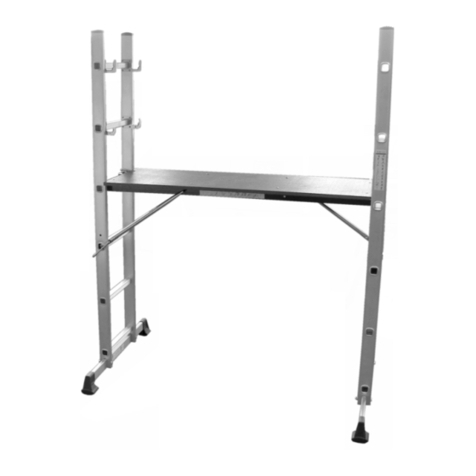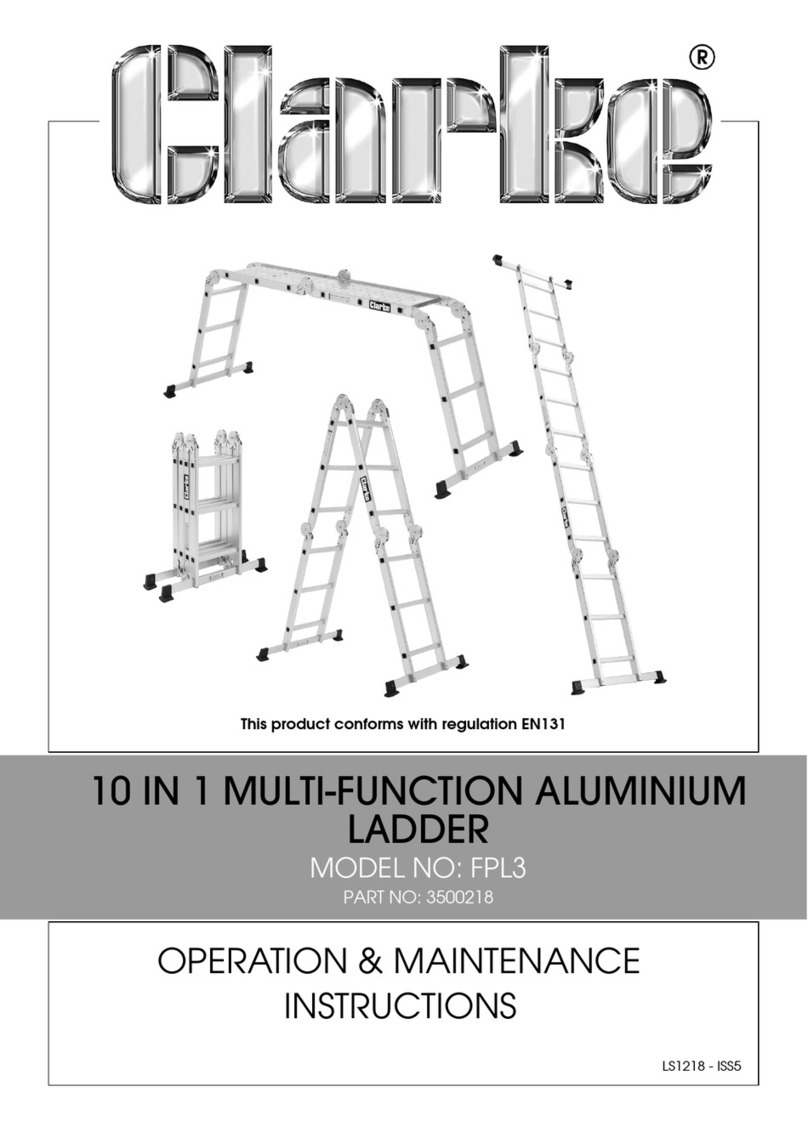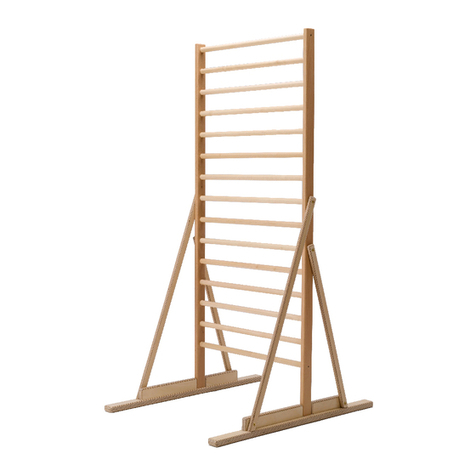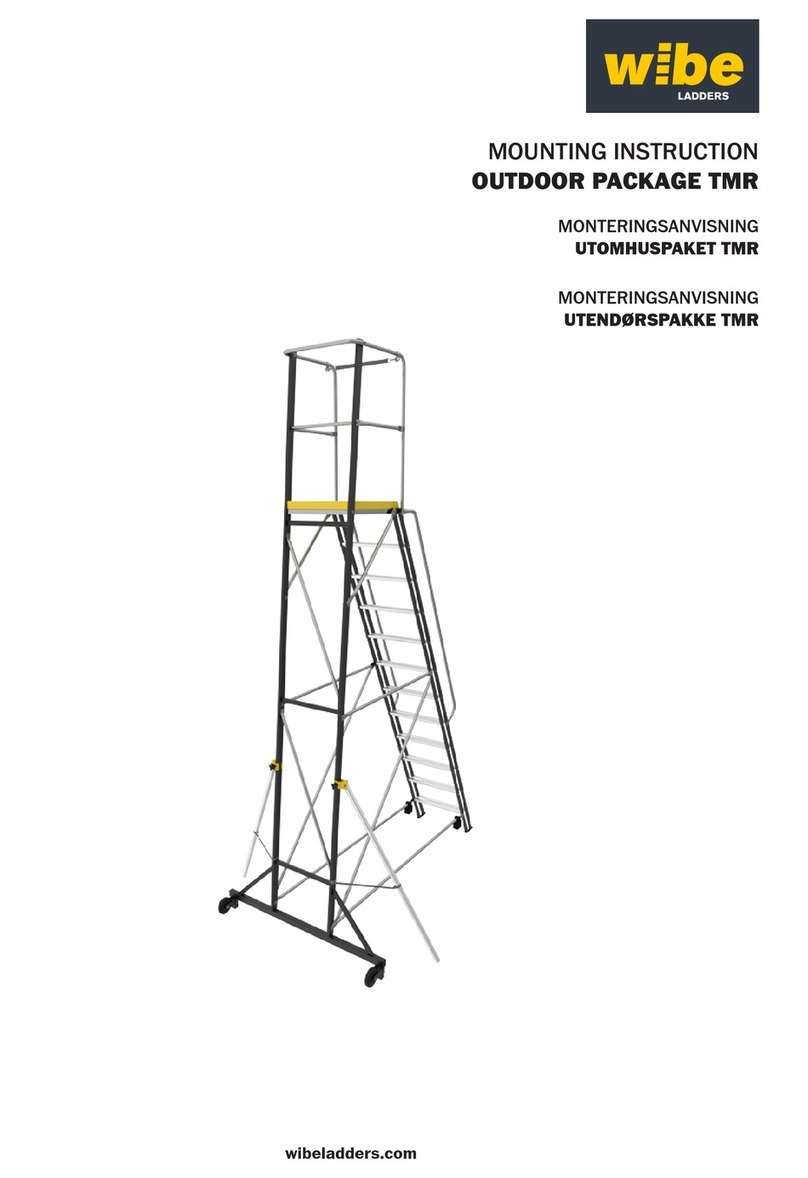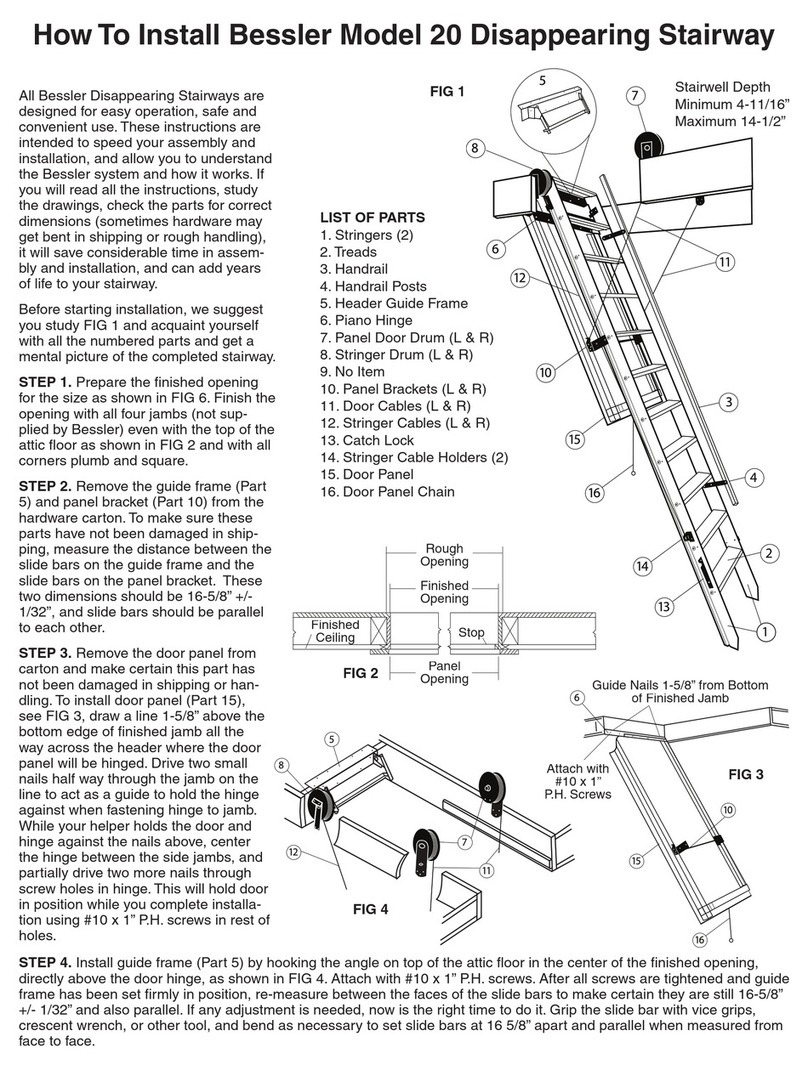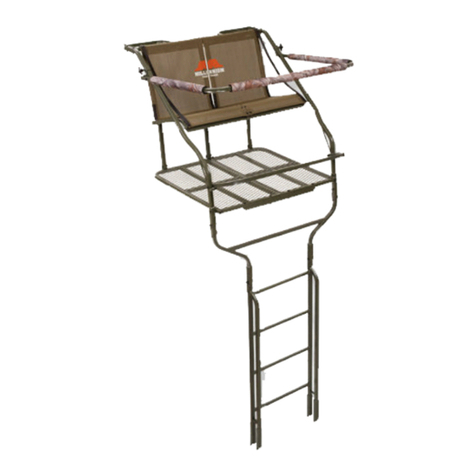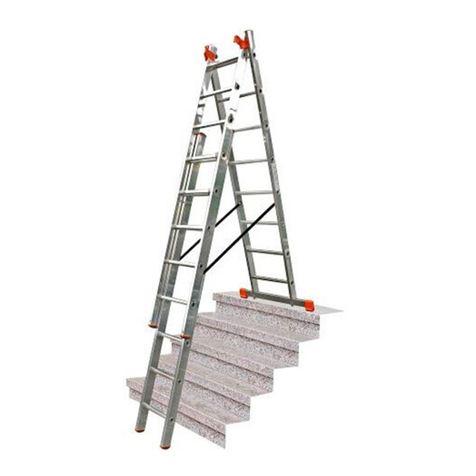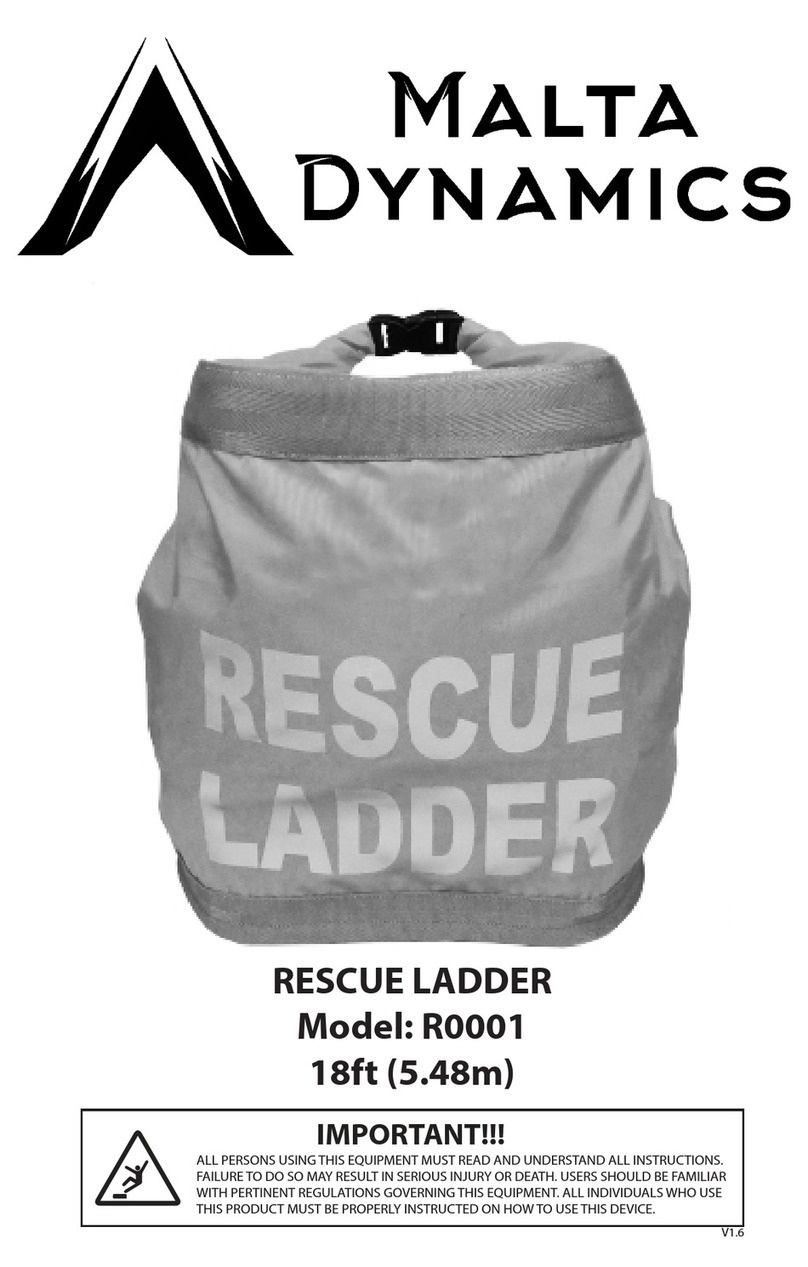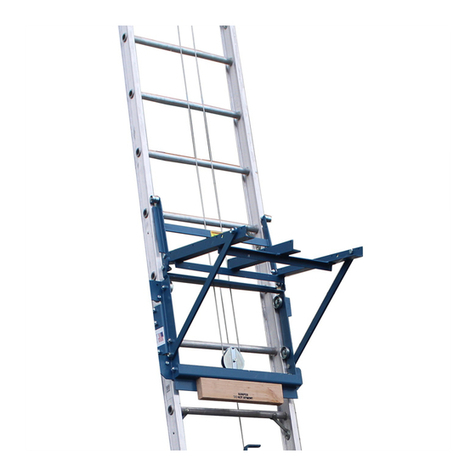
6
Parts & Service: 020 8988 7400 / E-mail: Parts@clarkeinternational.com or Service@clarkeinternational.com
POSITIONING AND ERECTING
THE LADDER
1. Ensure the ladder is fully
collapsed, all locks are secured
and the ladder is free from
contaminants before moving to
the area of work. Only extend
and close in a safe work area.
2. The ladder shall be erected in the
correct position, such as the
correct angle for a leaning
ladder (angle of inclination
approximately 1:4) with the rungs
or treads level (e.g. 1m away
from the base of a wall if
extending to climb 4m up).
3. Only position and use the ladder
on an even, level and immovable
base.
4. Ladders must never be
repositioned from above.
5. When positioning the ladder take
into account the risk of collision
with pedestrians, vehicles or
doors. Secure doors (not fire exits)
and windows where possible in
the work area.
6. Identify any electrical risks in the
work area, such as overhead lines
or other exposed electrical
equipment. This ladder is not
suitable for live electrical work as
it is conductive and offers no
protection from electrical
hazards.
7. The ladder shall only be
positioned flat on its feet, not the
rungs or steps.
8. Never position or use the ladder
on slippery surfaces (such as ice,
shiny surfaces or significantly
contaminated solid surfaces)
unless additional effective
measures are taken to prevent
the ladder slipping or ensuring
contaminated surfaces are
sufficiently clean.
9. The lock mechanisms for all the
extended rung sections shall be
locked (a ‘Click’ will be heard)
before using the ladder.
USING THE LADDER
1. Do not exceed the maximum
total load for the ladder (150 kg).
2. Only allow one person to use the
ladder at any time.
3. Do not overreach the user should
keep their belt buckle (navel)
inside the stiles and both feet on
the same step/rung throughout
the task.
4. Do not step off a leaning ladder
at a higher level without
additional security, such as tying
off or using a suitable stability
device.
5. Never stand on the top 1m of the
ladder.
6. Do not use the ladder in adverse
weather, such as strong wind.
7. Take precautions against children
playing on the ladder.
8. Do not use the ladder as a
bridge.
9. Face the ladder and keep a
secure grip on the ladder when
ascending and descending.
10. Do not spend long periods on a
ladder without regular breaks
(tiredness is a risk).
11. Ladders used for access to a
higher level should be extended

